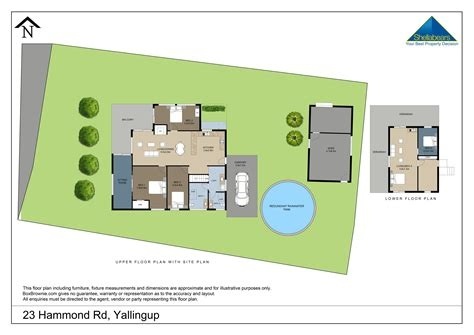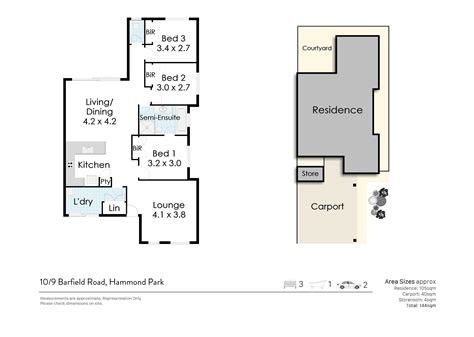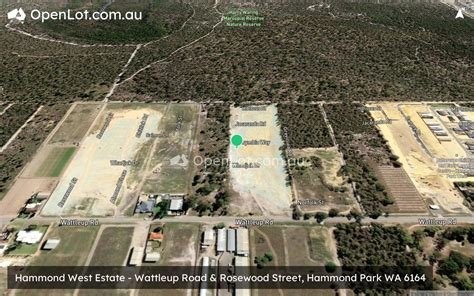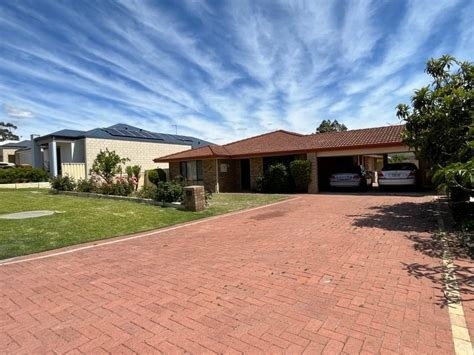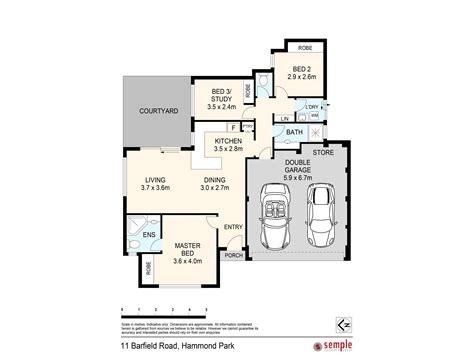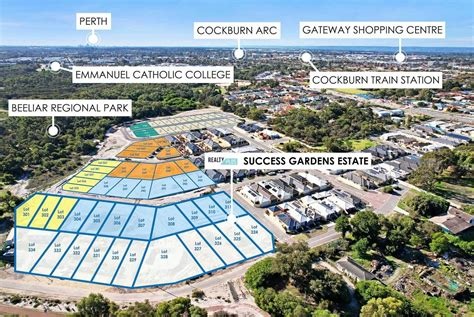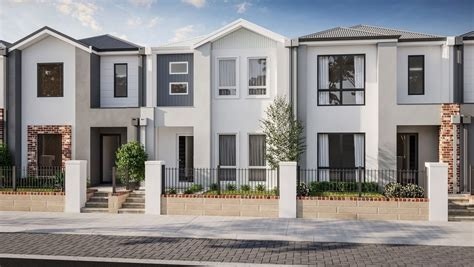Chart Color Schemes
est. as @ -- *
ABS ERP | -- people | --
2021 Census | -- people
Sales Activity
Curious about local property values? Filter the chart to assess the volume and appreciation (including resales) trends and regional comparisons, or scroll to the map below view this information at an individual property level.
Find a Recent Sale
Sales Detail
Population
Success - Hammond Park lies within the top 10% of areas nationally in terms of population growth performance according to AreaSearch analysis of short and medium-term trends
Success - Hammond Park's population was around 21,020 as of August 2025. This figure represents an increase of 3,566 people since the 2021 Census, which reported a population of 17,454. The estimated resident population in June 2024 was 20,712, with an additional 432 validated new addresses since the Census date contributing to this growth. This results in a density ratio of 2,372 persons per square kilometer, placing Success - Hammond Park in the upper quartile relative to national locations assessed by AreaSearch. The area's population growth rate of 20.4% since the 2021 census exceeded both the national average (8.6%) and state averages, indicating strong growth. Overseas migration accounted for approximately 37.1% of overall population gains during recent periods, with interstate migration and natural growth also contributing positively to this increase.
AreaSearch adopted ABS/Geoscience Australia projections for each SA2 area released in 2024 using a base year of 2022. For areas not covered by this data, AreaSearch utilised growth rates by age cohort provided by the ABS in its latest Greater Capital Region projections released in 2023 based on 2022 data. Based on these trends and statistics, Success - Hammond Park's population is forecast to increase significantly, with an expected growth of 5,584 persons by 2041, representing a total gain of 25.1% over the 17-year period.
Frequently Asked Questions - Population
Development
The level of residential development activity in Success - Hammond Park was found to be higher than 90% of real estate markets across the country
Hammond Park has seen approximately 227 new homes approved annually. Development approval data is provided by the Australian Bureau of Statistics on a financial year basis, with 1,136 homes approved over the past five years from FY-20 to FY-25, and 8 so far in FY-26. On average, 4.7 people have moved to the area for each dwelling built over the past five financial years. This indicates substantial lag between supply and demand, potentially leading to increased buyer competition and pricing pressures.
New properties are constructed at an average expected cost of $369,000, aligning with regional trends. Commercial approvals this financial year totalled $13.7 million, suggesting balanced commercial development activity in the area. When compared to Greater Perth, Hammond Park has similar development levels per person, maintaining market equilibrium consistent with surrounding areas.
New building activity consists of 97.0% detached houses and 3.0% medium and high-density housing, preserving the area's suburban identity with a concentration of family homes suited to buyers seeking space. Interestingly, developers are building more traditional houses than the current mix suggests at Census, indicating continued strong demand for family homes. With around 189 people per dwelling approval, Hammond Park exhibits characteristics of a growth area. Population forecasts indicate an increase of 5,276 residents by 2041. Based on current development patterns, new housing supply should meet demand, offering favorable conditions for buyers and potentially facilitating population growth beyond current projections.
Frequently Asked Questions - Development
Infrastructure
Success - Hammond Park has moderate levels of nearby infrastructure activity, ranking in the 45thth percentile nationally
Changes to local infrastructure significantly influence an area's performance. AreaSearch has identified 29 projects likely to impact the area. Notable ones include Hammond Park Shopping Centre, Paperbark Estate Residential Development, and Emmanuel Catholic College Expansion. The following list details projects considered most relevant.
Professional plan users can use the search below to filter and access additional projects.
INFRASTRUCTURE SEARCH
Frequently Asked Questions - Infrastructure
Hammond Park Shopping Centre
Neighbourhood shopping centre in Hammond Park anchored by a full-line Woolworths, with around 15 specialty tenancies and two standalone quick-service restaurant sites, approximately 6,000 m2 GLA with 370 on-site parking bays. Construction commenced May 2025 and practical completion is targeted for Q3 2026. Hoskins Contracting is the lead construction partner.
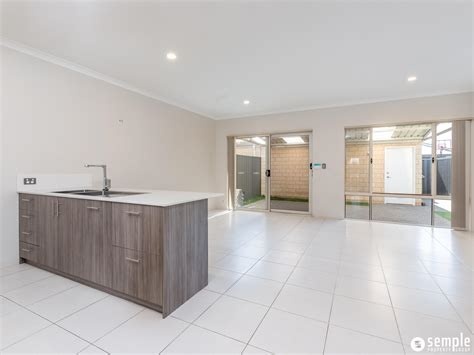
Hammond Park Shopping Centre
A new neighbourhood shopping centre development anchored by a full-line Woolworths supermarket, with diverse food and beverage tenancies, 15 specialty retail spaces, and two standalone quick-service restaurant sites. It will deliver 6,000m2 of retail space and 370 on-site parking bays, designed to be a community hub for the fast-growing suburb.
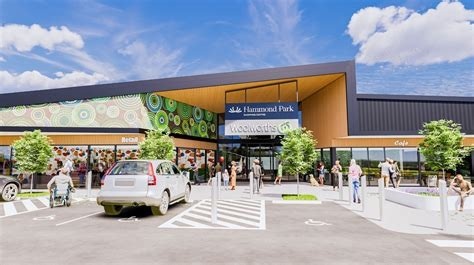
Gaebler Road Mixed-Use Commercial Development
A mixed-use commercial development, approved by the Metro Outer Development Assessment Panel (DAP), featuring a 7-Eleven store and fuel station, Starbucks, McDonald's, KFC, a medical centre, and a self-service car wash, to provide convenience services to the local area. The development was contentious due to its proximity to a primary school. The proposal was approved in December 2024, following a reconsideration by the DAP after a State Administrative Tribunal (SAT) review of conditions.
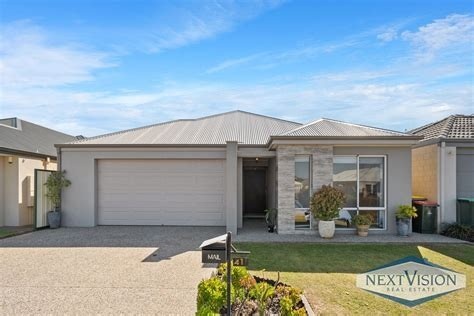
Beeliar Drive Commercial Precinct
A 2.07-hectare vacant land site at the corner of Beeliar Drive and Kemp Road in Success, zoned for mixed business development. The site offers high exposure with significant daily traffic, suitable for various commercial and light industrial uses. It is currently available for lease through expressions of interest.
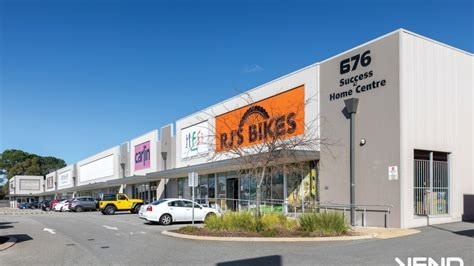
Emmanuel Catholic College Expansion
The expansion includes building a contemporary Technologies space with focus on the Hospitality Centre, refurbishment of general purpose learning spaces, minor improvements to teaching and learning spaces, and redevelopment of the College Master Capital Development Plan to meet increased enrolments and community needs. Completed works include the chapel and surrounding areas in Stage 11. Strategic possibilities include cafe/canteen, staffroom, Performing Arts Centre, College fencing, Environmental Centre, and bathroom upgrades.
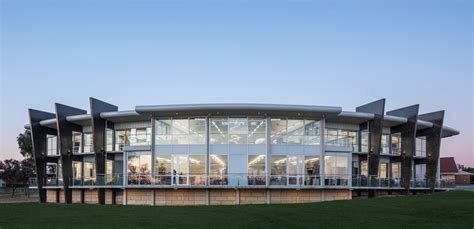
Hammond Park Secondary College
A government secondary school for Year 7 to 12 in Perth's southern corridor, which opened in 2020. Stage 1 was completed by late 2019 at a cost of $53.75 million, and Stage 2, costing $16.79 million, officially opened in May 2023. The school reached its full secondary cohort (Year 7-12) in 2025 with a planned capacity of 1,450 students. Facilities include specialist learning hubs, performing arts centre, sports courts, and a full-sized hockey/soccer field.
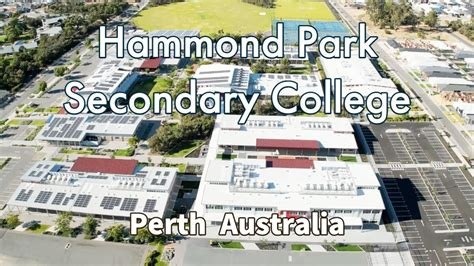
Hammond West Private Estate
Hammond West Private Estate is a carefully designed niche residential development by QUBE Property Group, comprising 450 homesites in the established suburb of Hammond Park, 25 minutes from the Perth CBD. The estate includes beautifully landscaped community parks, nature play equipment, shaded areas with BBQ facilities, and is located near Jilbup Primary School and the Frankland Park Sports and Community Facility. All homesites come with a 3kW solar system, front landscaping, boundary fencing, and Fibre to Home Connection.
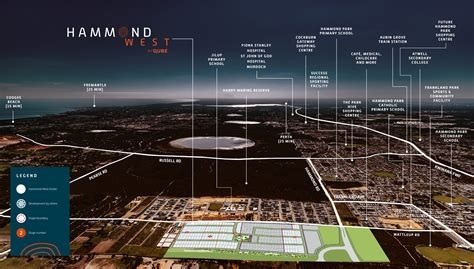
Hammond Road Duplication - Russell Road to Rowley Road
Upgrade to widen Hammond Road to a dual carriageway (north and south) between Russell Road and Rowley Road, including shared use paths on both sides, a kerbed central median for safer pedestrian crossings, and improved traffic management. The design is expected to be completed by the end of the 2024/25 financial year, with construction anticipated to commence in the next three to four years, subject to land acquisition and service relocation. The project is being delivered in stages and Stage 1 has received Main Roads WA funding.
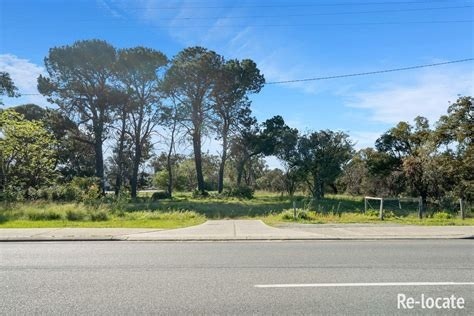
Employment
The exceptional employment performance in Success - Hammond Park places it among Australia's strongest labour markets
Hammond Park in Success has a highly educated workforce with strong representation from manufacturing and industrial sectors. The unemployment rate stood at 2.3% as of June 2025, with an estimated employment growth of 5.4% over the past year.
As of that date, 13,238 residents were employed, with an unemployment rate 1.6% lower than Greater Perth's rate of 3.9%. Workforce participation was notably higher at 77.1%, compared to Greater Perth's 65.2%. Key employment industries among residents included health care & social assistance, construction, and retail trade. Manufacturing showed particularly strong specialization, with an employment share 1.2 times the regional level.
Conversely, education & training had lower representation at 8.2% versus the regional average of 9.2%. Over the 12 months to June 2025, employment increased by 5.4%, while labour force grew by 5.8%, leading to a slight rise in unemployment by 0.4 percentage points. In comparison, Greater Perth recorded employment growth of 3.7% and unemployment rose by 0.1 percentage points. State-level data from Sep-25 showed WA employment contracted by 0.82%, with an unemployment rate of 4.3%, which compared favourably to the national unemployment rate of 4.5%. National employment forecasts from May 2025 projected growth of 6.6% over five years and 13.7% over ten years, but local growth patterns may differ due to industry-specific projections. Applying these projections to Hammond Park's employment mix suggests potential local growth of approximately 6.4% over five years and 13.5% over ten years.
Frequently Asked Questions - Employment
Income
Income metrics indicate excellent economic conditions, with the area achieving higher performance than 75% of national locations assessed by AreaSearch
AreaSearch released postcode level ATO data for financial year 2022. Success - Hammond Park's median income among taxpayers was $64,617, with an average of $77,127. Nationally, these figures are extremely high, compared to Greater Perth's median of $58,380 and average of $78,020. As of March 2025, estimated incomes would be approximately $72,119 (median) and $86,081 (average), based on Wage Price Index growth of 11.61% since financial year 2022. Success - Hammond Park's household, family, and personal incomes rank highly nationally, between the 82nd and 84th percentiles, according to Census 2021 income data. The largest income segment comprises 39.2% earning $1,500 - 2,999 weekly (8,239 residents), similar to the metropolitan region where 32.0% occupy this bracket. A substantial proportion of high earners, 32.2%, earn above $3,000/week, indicating strong economic capacity in the suburb. High housing costs consume 16.5% of income, but strong earnings place disposable income at the 80th percentile nationally. The area's SEIFA income ranking places it in the 7th decile.
Frequently Asked Questions - Income
Housing
Success - Hammond Park is characterized by a predominantly suburban housing profile, with a higher proportion of rental properties than the broader region
The dwelling structure in Success - Hammond Park, as per the latest Census, consisted of 81.0% houses and 19.1% other dwellings (semi-detached, apartments, 'other' dwellings). This is similar to Perth metro's structure, which was 81.2% houses and 18.8% other dwellings. Home ownership in Success - Hammond Park was at 14.6%, with the rest of dwellings either mortgaged (57.4%) or rented (28.0%). The median monthly mortgage repayment in the area was $1,993, higher than Perth metro's average of $1,950. The median weekly rent figure was recorded at $400, compared to Perth metro's $370. Nationally, Success - Hammond Park's mortgage repayments were above the Australian average of $1,863, while rents exceeded the national figure of $375.
Frequently Asked Questions - Housing
Household Composition
Success - Hammond Park features high concentrations of family households, with a higher-than-average median household size
Family households constitute 78.9% of all households, including 43.5% couples with children, 22.7% couples without children, and 11.6% single parent families. Non-family households make up the remaining 21.1%, with lone person households at 18.2% and group households comprising 2.9%. The median household size is 2.8 people, larger than the Greater Perth average of 2.6.
Frequently Asked Questions - Households
Local Schools & Education
Success - Hammond Park shows strong educational performance, ranking in the upper quartile nationally when assessed across multiple qualification and achievement indicators
University qualifications in Success - Hammond Park edge above the SA3 area average of 27.4%, with 31.7% of residents aged 15+ holding such qualifications. Bachelor degrees are most common at 21.6%, followed by postgraduate qualifications (7.2%) and graduate diplomas (2.9%). Vocational credentials are prominent, with 36.5% of residents aged 15+ holding them, including advanced diplomas (11.7%) and certificates (24.8%).
Educational participation is high at 32.8%, with 13.0% in primary education, 7.7% in secondary education, and 5.3% pursuing tertiary education. Success - Hammond Park's five schools have a combined enrollment of 3,337 students. The area demonstrates above-average socio-educational conditions (ICSEA: 1053). Education provision is balanced with four primary and one secondary school serving distinct age groups. School capacity exceeds typical residential needs at 15.9 places per 100 residents compared to the regional average of 11.5, indicating the area serves as an educational center for the broader region.
Frequently Asked Questions - Education
Schools Detail
Nearby Services & Amenities
Transport
Transport servicing is good compared to other areas nationally based on assessment of service frequency, route connectivity and accessibility
Public transport analysis shows 79 active transport stops operating within Success - Hammond Park. These comprise a mix of train and bus services. Sixteen individual routes service these stops collectively providing 5,804 weekly passenger trips.
Transport accessibility is rated excellent with residents typically located 187 meters from the nearest stop. Service frequency averages 829 trips per day across all routes equating to approximately 73 weekly trips per stop.
Frequently Asked Questions - Transport
Transport Stops Detail
Health
Success - Hammond Park's residents boast exceedingly positive health performance metrics with very low prevalence of common health conditions across all age groups
Health outcomes data shows excellent results across Success - Hammond Park with very low prevalence of common health conditions across all age groups.
The rate of private health cover is exceptionally high at approximately 58% of the total population (12,149 people). Mental health issues and asthma are the most common medical conditions in the area, impacting 6.9 and 6.7% of residents respectively. A total of 78.4% of residents declare themselves completely clear of medical ailments compared to 72.9% across Greater Perth. The area has 8.2% of residents aged 65 and over (1,723 people), lower than the 14.8% in Greater Perth. Health outcomes among seniors require more attention despite being strong.
Frequently Asked Questions - Health
Cultural Diversity
Success - Hammond Park is among the most culturally diverse areas in the country based on AreaSearch assessment of a range of language and cultural background related metrics
Hammond Park, located in Success, has a significant cultural diversity with 29.0% of its population speaking languages other than English at home and 41.0% born overseas. Christianity is the predominant religion in Hammond Park - Success, making up 44.8% of the population. Notably, Hinduism is overrepresented, comprising 4.3% compared to the Greater Perth average of 1.9%.
In terms of ancestry, the top three groups are English (23.2%), Australian (20.1%), and Other (13.1%). Some ethnic groups show notable differences: South African at 1.7% (regional average is 1.1%), Croatian at 1.1% (vs regional 2.3%), and Filipino at 2.7% (regional average is 2.1%).
Frequently Asked Questions - Diversity
Age
Success - Hammond Park's young demographic places it in the bottom 15% of areas nationwide
The median age of Success - Hammond Park is 33, which is younger than Greater Perth's figure of 37 and Australia's national average of 38 years. Compared to Greater Perth, Success - Hammond Park has a higher proportion of residents aged 35-44 (19.3%) but fewer residents aged 65-74 (4.9%). This concentration of 35-44 year-olds is significantly higher than the national average of 14.2%. Between the 2021 Census and now, the population aged 15 to 24 has increased from 11.6% to 12.5%, while the 0 to 4 age group has decreased from 8.5% to 7.1%. By 2041, significant demographic changes are projected for Success - Hammond Park. The 45 to 54 age group is expected to grow by 46%, adding 1,277 residents to reach a total of 4,033. Conversely, the 35 to 44 age group is projected to decrease by 6 residents.
